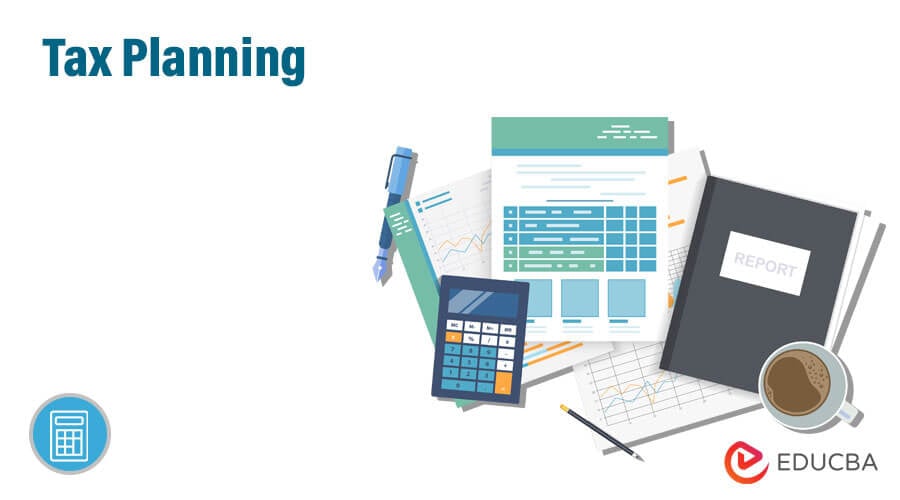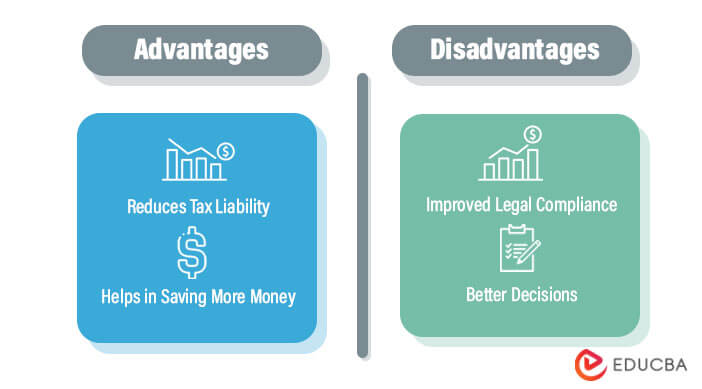Updated July 18, 2023
What is Tax Planning?
The term “tax planning” refers to analyzing an individual’s financial situation to design investment and exemption strategies to ensure optimum tax efficiency.
A sound tax plan requires all the elements of a financial plan to work in unison in the most tax-efficient way. It is very important for individual investors because it can potentially reduce their tax liability and enhance their ability to contribute to their retirement fund for the future.
Explanation
Every individual must pay taxes according to the applicable income tax brackets, so they must do their tax planning efficiently to achieve their financial goal. Individuals can make the best use of the available exemptions and deductions to reduce their tax liability. For instance, some investors opt for joint IT filing with their spouse to enjoy the benefits of the lower income of the other partner. Effective tax planning can cut down tax payments significantly. However, it is essential to note that it differs from tax avoidance and tax evasion, which prohibits under tax laws.
Objectives of Tax Planning
As mentioned above, it is essential to an individual investor’s financial planning. It helps channel taxable income into various investment opportunities, lowering tax liability. In the future, investors can utilize investments to meet various financial goals, including building a retirement corpus, funding their children’s education, and more. Overall, it can be said that the primary objective is the reduction of tax liability.
How Does Tax Planning Work?
Tax planning has to consider several factors, including periodic income, size and timing of planned expenses, type of investments, and applicable exemptions. For instance, contributing to a retirement fund is the most common way to reduce tax liability. Anyone below the age of 50 years can reduce their gross income by up to $6,000 by contributing that much to a traditional IRA. Lower gross income means lower tax payments. This is how it works.
Examples of Tax Planning
Following examples as given below:
Example #1
Let us take the example of a married couple to explain the concept. Let us assume that one of the partners is a basic rate taxpayer while the other partner falls in a higher tax bracket. They also have a secondary income source through rental income. Who should report the rental income in their tax filing to ensure efficient tax planning?
In this case, it would be logical that the partner with the lower income (basic rate taxpayer) reports rental income in the tax filing. This would ensure lower combined tax liability for the couple.
Example #2
Let us take the example of David, who is entitled to income exemption outside the US. During 2016, he earned $65,000 working outside the US, which he received over a period of 2 years: $35,000 in 2016 and $30,000 in 2017. David can either report the entire income in 2016 on an accrual basis or over the 2-year period on a cash basis. Determine what reporting should be beneficial for him if the exemption limit for any year is $40,000.
If David reports the entire income in 2016 on an accrual basis, then he can avail of tax exemption of up to $40,000 only. However, if he reports them on a cash basis, he can avail of a tax exemption of $35,000 in 2016 and $30,000 in 2017, which means a total exemption of $65,000. So, it would be logical for him to do the tax filing on a cash basis.
Types of Tax Planning
It can be broadly categorized into four major types:
- Purposive Tax Planning: In this type, intelligent provisions are made to avail tax benefits while adhering to a certain well-defined objective, such as a change in investment strategy or diversification of business activities.
- Permissive Tax Planning: This type takes advantage of various exemptions, deductions, and concessions while following all the rules permissible under various tax provisions and law frameworks. In short, taxpayers engage in permissive tax planning by adhering to the provisions outlined in the tax laws.
- Short-Range Tax Planning: In this type, temporary tactics execute at the year’s end to achieve certain specific objectives.
- Long-Range Tax Planning: In this type, organizations formulate strategies at the beginning of the year, and their outcomes become apparent only in the long run.
Need for Tax Planning
The underlying need for a better standard of living now and in the future drives the need for planning. Efficient tax planning can minimize the impact of taxes on the cash inflow and significantly speed up the future wealth accumulation process.
Advantages and Disadvantages
The various advantages and disadvantages are explained below.
Advantages
- It reduces tax liability by utilizing the benefits of all available deductions.
- It aids in saving more money, which can be invested in other productive opportunities to establish a stable secondary income source.
- If executed properly, it can mitigate the risk of unnecessary litigations about taxation.
Disadvantages
- Usually, it results in the blockage of funds for purchasing tax-saving investment products, which can impact liquidity in the short term.
- Sometimes, taxpayers fail to distinguish between tax planning and tax evasion, so they misinterpret the provisions under the tax law.
Conclusion
So, it can be seen that tax planning is done well within the applicable limits of the tax laws. There are several tax saving options available that can be evaluated to check whether or not they help in tax savings.
Recommended Articles
This is a guide to Tax Planning. Here we discuss the introduction and how it works, along with its advantages and disadvantages. You may also have a look at the following articles to learn more –





